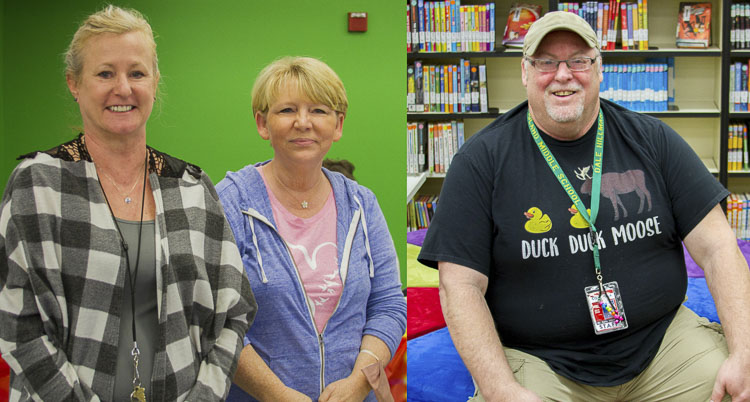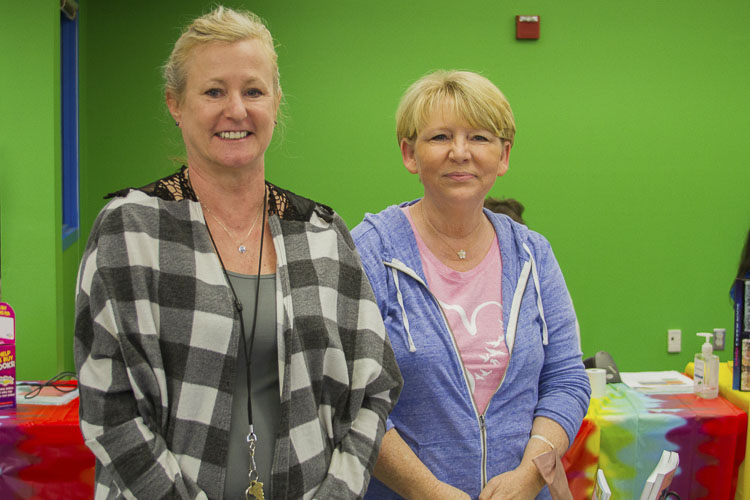
The need for paraeducators always remains high for every school district, but particularly now in Woodland Public Schools where a staffing shortage has left many exciting opportunities
Woodland Public Schools recognizes the hard work and dedication of its paraprofessionals, instructional assistants who help students develop, grow, and learn in every part of their academic career from kindergarten through graduation.
Paraprofessionals serve as an integral part of the education system, providing support to teaching staff by helping struggling students with additional lessons, providing intervention to support positive behavior, and much more. “Our paraeducators are incredibly valuable, playing a vital role in our classrooms – it’s not simply ‘nice’ to have a para, their roles are absolutely necessary to support effective student learning,” said Vicky Barnes, Director of Human Resources for Woodland Public Schools. “Paraeducators implement a lot of the hands-on curriculum working one-on-one with our students; they provide incredibly important support for our teachers and help students learn effectively.”
While working directly with students, paraprofessionals interested in becoming teachers can take part in free apprenticeship programs offered by Woodland Public Schools which will eventually lead to full teaching certification and may even lead to teaching jobs in the schools where they already work.
Patricia “Patty” Graybill followed in her mother’s footsteps

Patricia “Patty” Graybill started working for Woodland Public Schools when Woodland Intermediate School (now North Fork Elementary School) first opened in 1998. Graybill started by working with remedial math groups before transitioning to become the school’s Library Assistant. “I really liked the opportunity – I had enjoyed working in a bookstore previously, so this role was the perfect fit for me,” she said.
For Graybill, working in schools as a paraeducator was nearly a family tradition. “My mom was a para for more than 30 years, so when my kids started attending school, I decided to go to work and wanted a similar job with kids,” she said. “Additionally, the schedule really works for me including getting summers off; I love the summertime.”
Graybill encourages parents looking for work to consider becoming a paraeducator. “The role is particularly great for parents whose kids are in school since you share the same schedule,” she said. “Getting to make a big difference in kids’ lives is also a huge benefit; we get to interact with every student in every grade level.”
Debbie Sheldon’s calm demeanor led to her finding her calling
Debbie Sheldon works as a Student Support paraeducator at North Fork Elementary with Graybill. Her role involves providing students with behavioral support, helping to problem-solve issues they may be experiencing in class or elsewhere. Sheldon got her start working in special education. “Working in special ed, you become familiar with how to help students deal with a lot of behavioral issues,” she explained. “Because of my background, transitioning to student support when the school needed me worked great.”
Sheldon decided to become a paraeducator after volunteering at her children’s school and having the principal encourage her to apply. “I have a huge passion for kids, and, for some reason, I find the naughtier they are, the better I can help them,” she said. “I tend to be very calm and don’t get excited over little things so I can take on big problems and issues.”
Paraeducators’ roles are vital not only to student education, but also for student safety. Recently, a kindergarten student started choking on a tater tot while Sheldon was working as the cafeteria monitor. Her quick thinking and calm demeanor may have saved the student’s life. “The poor boy was turning purple, so I picked him up and administered the Heimlich Maneuver immediately,” she said. “I get a big smile from him every single time he sees me now.”
Dale Hillman’s unique empathy for others helped him excel as an instructional aide

Dale Hillman works as an instructional aide with English Language Learners (ELL) at Columbia Elementary School. Hillman discovered a calling for working in education working as a Teacher’s Assistant in a special education program when he was in high school. “After I graduated, they called to offer me a job working with special education students,” he said. “That’s when I discovered I have a natural affinity for work with kids.”
After spending 5-6 years working with schools and programs in Longview, he transitioned to Woodland nearly 30 years ago. Hillman considered becoming a teacher, however changed his mind because he wanted more face time with students. “I’ve always wanted to do what I like to do throughout my career,” he said. “As soon as I came to Woodland, I had more opportunities to use all of my skill sets to help students.”
Hillman attributes the trials he experienced growing up with providing him the compassion to help guide special-needs students. “Growing up, I always knew what the right and wrong ways were to treat people and wanted to help others out, especially kids,” he said. “If I can make a difference in another person’s life, then that’s what I want to do.” As an instructional aide supporting English language learners (ELL), Hillman helps students learn English and develop language skills. “You have to keep all the lessons, curriculum, and knowledge in your mind so you can help struggling students; I call it my ‘teacher-brain,’” he said.
For Hillman, Woodland’s small size makes it an appealing place to work. “Everyone knows each other which gives you the opportunity to become more of a benefit because parents, students, and staff can directly provide positive reinforcement,” he said. “Woodland has always been so welcoming because they let you be yourself; they trust you know what you’re doing, and there’s a lot of encouragement to do what you know; your opinion matters here.”
Interested in becoming a paraeducator and/or teacher with Woodland Public Schools?
The need for paraeducators always remains high for every school district, but particularly now in Woodland Public Schools where a staffing shortage has left many exciting opportunities.
“Working as a paraeducator provides a rewarding career in itself, and it also offers the potential for advancement to become a fully-certificated teacher, too,” said Barnes. “Through our apprenticeship program, paraprofessionals can take college courses for free, earn an Associates Degree while working, and, now, can go on to earn a Bachelor’s degree and become a certificated teacher for our system.”
To become a paraprofessional, applicants need to have graduated high school and pass the ETS Parapro Assessment general information test at either Lower Columbia College or Educational Service District 112. Interested parties can apply for available positions prior to completing the assessment, however, if hired, they will need to pass the assessment prior to beginning working in classrooms. If an applicant has an associate degree or higher, they do not need to complete the ETS assessment.
After starting work, paraprofessionals can enroll in the paraprofessional apprenticeship program which offers three different levels. During the first level, paraprofessionals take college courses and complete on-the-job training which leads to a wage increase and half of the credits needed for an Associate’s degree upon completion. The second level results in a full associate’s degree. For those interested in going on to the third level, they will earn a Bachelor’s degree and have the opportunity to become a fully-certificated teacher.
Woodland Public Schools provides even more benefits to those taking part. Participating colleges Green River and Lower Columbia offer generous 50% discounts on college credits for those enrolled in the paraprofessional apprenticeship program, however, Woodland Public Schools also fully reimburses the entire remaining cost of tuition and fees to participants who pass their classes with a B or above.
To learn more about becoming a paraprofessional or enrolling in the paraprofessional apprenticeship program, contact Vicky Barnes directly via email at barnesv@woodlandschools.org or at (360) 841-2702.
Job-seekers can find all available Woodland Public Schools’ positions for paraprofessionals, teaching staff, support staff, and more online at www.woodlandschools.org/employment
Information provided by Woodland School District.




